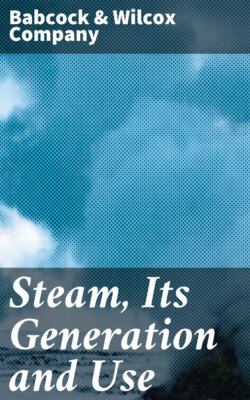Читать книгу Steam, Its Generation and Use - Babcock Wilcox Company - Страница 21
На сайте Литреса книга снята с продажи.
TABLE 6 LINEAL EXPANSION OF SOLIDS AT ORDINARY TEMPERATURES
Оглавление(Tabular values represent increase per foot per 100 degrees increase
in temperature, Fahrenheit or centigrade)
+—————————+———————+————————+————————+
| | Temperature | | |
| | Conditions[4]|Coefficient per |Coefficient per |
| Substance | Degrees | 100 Degrees | 100 Degrees |
| | Fahrenheit | Fahrenheit | Centigrade |
+—————————+———————+————————+————————+
|Brass (cast) | 32 to 212 | .001042 | .001875 |
|Brass (wire) | 32 to 212 | .001072 | .001930 |
|Copper | 32 to 212 | .000926 | .001666 |
|Glass (English | | | |
|flint) | 32 to 212 | .000451 | .000812 |
|Glass (French | | | |
|flint) | 32 to 212 | .000484 | .000872 |
|Gold | 32 to 212 | .000816 | .001470 |
|Granite (average) | 32 to 212 | .000482 | .000868 |
|Iron (cast) | 104 | .000589 | .001061 |
|Iron (soft forged) | 0 to 212 | .000634 | .001141 |
|Iron (wire) | 32 to 212 | .000800 | .001440 |
|Lead | 32 to 212 | .001505 | .002709 |
|Mercury | 32 to 212 | .009984[5] | .017971 |
|Platinum | 104 | .000499 | .000899 |
|Limestone | 32 to 212 | .000139 | .000251 |
|Silver | 104 | .001067 | .001921 |
|Steel (Bessemer | | | |
|rolled, hard) | 0 to 212 | .00056 | .00101 |
|Steel (Bessemer | | | |
|rolled, soft) | 0 to 212 | .00063 | .00117 |
|Steel (cast, | | | |
|French) | 104 | .000734 | .001322 |
|Steel (cast | | | |
|annealed, English) | 104 | .000608 | .001095 |
+—————————+———————+————————+————————+
High Temperature Measurements—The temperatures to be dealt with in steam-boiler practice range from those of ordinary air and steam to the temperatures of burning fuel. The gases of combustion, originally at the temperature of the furnace, cool as they pass through each successive bank of tubes in the boiler, to nearly the temperature of the steam, resulting in a wide range of temperatures through which definite measurements are sometimes required.
Of the different methods devised for ascertaining these temperatures, some of the most important are as follows:
1st. Mercurial pyrometers for temperatures up to 1000 degrees
Fahrenheit.
2nd. Expansion pyrometers for temperatures up to 1500 degrees
Fahrenheit.
3rd. Calorimetry for temperatures up to 2000 degrees Fahrenheit.
4th. Thermo-electric pyrometers for temperatures up to 2900 degrees Fahrenheit.
5th. Melting points of metal which flow at various temperatures
up to the melting point of platinum 3227 degrees Fahrenheit.
6th. Radiation pyrometers for temperatures up to 3600 degrees
Fahrenheit.
7th. Optical pyrometers capable of measuring temperatures up to 12,600 degrees Fahrenheit.[6] For ordinary boiler practice however, their range is 1600 to 3600 degrees Fahrenheit.
[Illustration: 228 Horse-power Babcock & Wilcox Boiler, Installed at the
Wentworth Institute, Boston, Mass.]
Table 7 gives the degree of accuracy of high temperature measurements.
